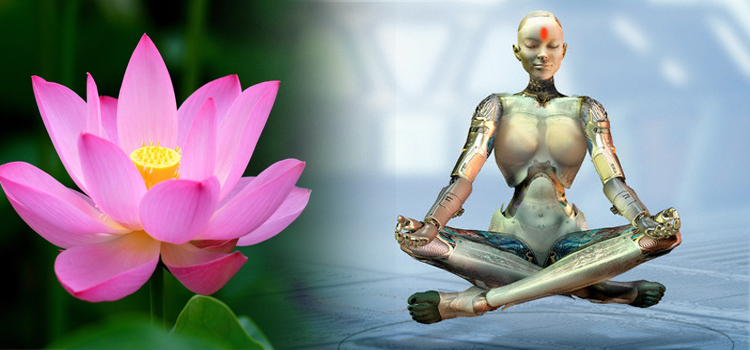I would like to discuss briefly my ideas on the English terms like religion, faith and culture and Indic terms like dharma, sanatana dharma, vaidika dharma etc. and also touch upon what we should call ourselves.
Different cultures have had different experiences which have conditioned them in different ways, and thus the categories they create to analyze the world also are very different. For instance, west as we know it is a synthetic combination of Christianity and Greco-Roman traditions. Since probably the times of Renaissance, the idea of the separation of religious and secular affairs, the former dealing with church affairs and the latter dealing with outside the church affairs has taken a strong root in western society. As a result of this, a large group of people have emerged that see the world purely from a “secular” worldview, removed of any church influence in their lives. This is the primary motivation for seeing the world of human affairs through a divided paradigm of religion and culture.
Indian history of ideas has had a different trajectory. Here, we have not had the overpowering control of churches, but rather, the philosophical schools that emerged were more abstract and tried to explain, rather than control the way the society functions. As a result of this, the strict division between religion and culture did not exist. Instead, we have a radically different formulation: the notion of dharma, that permeates the ideas of Indians.
However, due to western education becoming the norm in India since the times of the British, it has become a norm for even Indians to see their own tradition in terms of western categories like culture and religion, instead of rightly viewing not just our society but also others in terms of our paradigm of dharma. Now that we are independent of foreign rule for the past 65 years, we should also take the next rightful step of reclaiming our own categories and using them to view the world.
So what is dharma? Dharma literally means that which supports or upholds or maintains the order of the Universe (called Rta). This is a much more far reaching categorization than religion or culture. While religion in the western sense typically refers to an institutionalized framework where a church maintains a list of commendments to follow, dharma is a more deeper principle and is not applicable to humans alone, but pertains to everything in existence.
So for instance, what upholds an atom or maintains its existence? It is that the sub-atomic particles in the atom are adhering to their dharma (of doing what they ought to be doing). When we come to the human realm, we all humans have our own social identities. Not one, but several. We carry these as various kinds of labels, depending on where and to what parents we were born, what we studied, what professions we chose, what organizations we choose to belong to, what kind of relationships we enter into with other human beings etc. For instance, we all would be, in relation to other people, husbands and wives, brothers and sisters, sons and daughters, fathers and mothers, friends, co-workers, fellow citizens, and so on, at the same time. We could belong to birth based groups (jAtis) or membership based groups (sanghas). What “upholds” all these labels then is the dharma of human beings.
My brotherhood to my sibilings is upheld by my properly adhering to brotherly dharma. My sonhood to my parents is upheld by my properly adhering to filial dharma. My citizenship to my country is upheld by my adhering to the dharmas of the citizenry and so on and so forth. Thus, the separation between religion and culture would be a meaningless thing in our viewpoint, because dharma encompasses both these western categories.
So, a westerner might consider his eating etiquette at a dinner table as belonging to the realm of culture and a secular act, while going to church on sunday with his family as a religious act. But from our viewpoint, both are acts of dharma – the former a dharma to be followed at the dinner table as by adhering to it, he/she is upholding good relations with those who are eating with him (as it is expected behaviour at the table) and the latter upholds the institution called the church, which is a membership based group he/she belongs to.
Next coming to the question of what to call our “religion” (I put it in quotes because I just discussed that we should not use that word to describe ourselves). Now, as we see, dharma is a universal principle. And the illustrious beings that have gone before us have also identified this dharma to be ever-existing.
After all, even if humans do not exist, there could be animals and insentinent creatures, which would have their own dharma. Even if earth itself ceases to exist, so many things exist in the universe, like the stars and various galaxies, adhering to their dharma. Even if the entire universe gets unmanifest, the unmanifest Prakriti is also adhering to her dharma of pulsating between manifestation and unmanifestation and so on.
Thus, dharma is certainly eternal. This is why dharma is given an adjective of Sanatana. So, Sanatana Dharma is not an object different from dharma – it is dharma itself, but explained by adding an adjective to it, describing its property of being eternal. So, it certainly does not refer to any religion in the western sense. So, how did we categorize ourselves then in the past? How for instance, are the differences between Buddhism and Jainism and Vedic thoughts expressed in Indic categories? Here comes the term called Darshana. Darshana is literally seeing. It desribes a particular coherent way of viewing dharma. For instance, all schools of thought which take the texts called vedas as an inviolable source (they could have others sources also like smritis, puranas, itihasas etc. in addition to Vedas) are called vaidika darshanas or Astika darshanas.
Those that do not give this position to vedas are called avaidika darshanas or nAstika darshanas. And each of these darshanas, try in their own way, to explain what dharma is. As examples, vedic schools would say performance of the yajnas prescribed in the Vedas is a Dharmic act. Or Buddhist schools would say adhere to the Noble eightfhold path.
These exhortations thus are different in the various schools. But they all are attempts to explain the single Sanatana dharma. While each school could claim that its explanation is the actual Sanatana dharma, it is very important to see the difference between Sanatana dharma itself and the various competing claims to Sanatanahood of the various darshanas. This appreciation should exist, even when we consider our own darshana as the actual Sanatana Dharma (after all, each one of us considers his or her view the right view, don’t we?).
Now, we are in times, where we commonly consider ourselves to belong to a religion and we call this religion Hinduism. And in these times, different darshanas, for various socio-political reasons do not want to associate with the word Hindu. In this scenario, Hinduism has come to mean not the traditions of all people of India, but have come to have a limited sense of referring only to Vaidika darshanas. Hence, it would be incorrect to call this limited term Hinduism as Sanatana dharma. This is not to say that we cannot consider our own Darshana’s standpoint as the real Sanatana Dharma.
In fact, we should most definitely do so, as it would be meaningless to claim to belong to a darshana, when we at the same time hold some other Darshana to be more correct than our own. But it certainly means that we should recognize the difference between Sanatana Dharma as an abstract all-encompassing principle, and our own claim to represent this Dharma. So, the best name that we can give ourselves is to identify our Darshanas with unambiguous terms. So for instance, Vaidika Darshana could be a common apellation to a large variety of darshanas. Within Vaidika darshanas would be the Vedanta Darshanas like Advaita, Vishishtadvaita, Dvaita, etc. We could even have a view different from all these traditional schools and still consider ourselves vaidika.
In that case, it would be our own personal Darshana. Similarly, we should also be able to say what darshana someone else belongs to (as part of viewing the world outside also in Dharmic terms). Thus within Nastika darshanas, we can have a big family of western darshanas and Christianity (with all its denominations), secularism, capitalism, communism, feminism and so on would all count as darshanas in this western darshana group. Similarly, Islam would form a large darshana group within which we could have Sunni Darshanas, Shia Darshanas, Sufi Darshanas, etc. In my opinion, it is only when we learn to remove our western lens and start viewing ourselves in such traditional categories, and also use these categories to understand the rest of the world, that the real Independence of our civilization is achievable.
I am deeply thankful to the very insightful book Being Different by Shri Rajiv Malhotra, from which I have learnt a lot about the need for a reverse gaze at the west and also about the nature of the western society and they reflect is this write-up.
By Karthik Vaidhinathan































